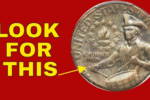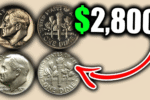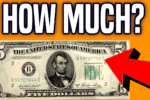Rare 2013 $100 notes are Extremely Valuable:Most people see the $100 bill as just another piece of paper currency, but did you know some 2013 series $100 notes could be worth far more than their face value? That’s right – collectors are on the hunt for rare bills from this series, and if you’re lucky, your old Benjamin Franklin might be worth hundreds or even thousands of dollars. Here’s everything you need to know about the valuable 2013 $100 notes, how to spot one, and why they are fetching big bucks in the collector’s market.
What Makes the 2013 $100 Bill Special?
The 2013 series $100 notes introduced a bold, redesigned look. These bills featured advanced anti-counterfeiting technology, including:
-
A blue 3D security ribbon
-
A color-shifting bell in an inkwell
-
Raised printing
-
Microprinting and watermark
But what really excites collectors are printing errors, rare serial numbers, and certain Federal Reserve Bank identifiers. Some of these notes slipped through the cracks during production, making them extremely rare and valuable today.
Rare Features to Look Out For
Here are some signs that your 2013 $100 bill could be worth far more than $100:
1. Low Serial Numbers
Bills with serial numbers like “00000001” to “00000100” are very valuable. The lower the number, the better.
2. Repeater and Radar Serial Numbers
-
Repeaters (like 12341234 or 45454545)
-
Radars (like 12344321 or 56666565)
These patterns are rare and highly sought after.
3. Star Notes
When a bill is misprinted, it is replaced with one bearing a star next to the serial number. These are called star notes. Some 2013 $100 star notes are particularly valuable, especially if they were printed in smaller batches.
4. Mismatched Serial Numbers or Printing Errors
If the serial numbers on the left and right sides of the bill do not match, or if there’s an ink smear, offset print, or missing element, you might be holding a rare error bill. These can sell for hundreds or even thousands of dollars.
5. Unusual Federal Reserve Banks
Notes from less common Federal Reserve districts, such as the Minneapolis or San Francisco banks, especially combined with star notes or printing errors, can also raise the value.
Real-Life Examples of High-Value 2013 $100 Notes
-
In 2021, a 2013 $100 note with a mismatched serial number sold for over $3,000 at auction.
-
A low serial number bill (00000003) fetched $10,000 among collectors.
-
Some star notes from the 2013 series printed in Fort Worth, Texas, with rare serial ranges are listed online for $500 to $1,200.
These examples show the potential value hidden in what many assume is an ordinary piece of currency.
How to Check If You Have a Rare Bill
Follow these simple steps to inspect your 2013 $100 notes:
-
Look at the serial number: Is it low, a star note, or a unique pattern?
-
Check both serial numbers: Make sure they match exactly.
-
Examine for printing errors: Smudges, ink shifts, or missing elements are a big sign.
-
Identify the Federal Reserve Bank letter: This is shown in a black seal on the left of the bill.
-
Compare your note with online resources like the U.S. Currency Education Program, or consult a currency appraisal expert or coin shop.
Where to Sell a Rare 2013 $100 Note
If you think you’ve found a valuable bill, you can sell it through:
-
Online marketplaces like eBay or Etsy
-
Currency auctions hosted by major numismatic firms
-
Coin and currency dealers in your area
-
Social media or collector groups specializing in U.S. paper currency
Make sure to research current values and possibly get a professional appraisal to ensure you’re getting a fair price.





